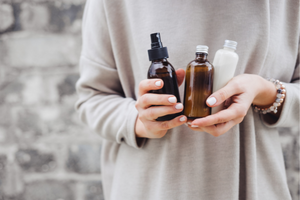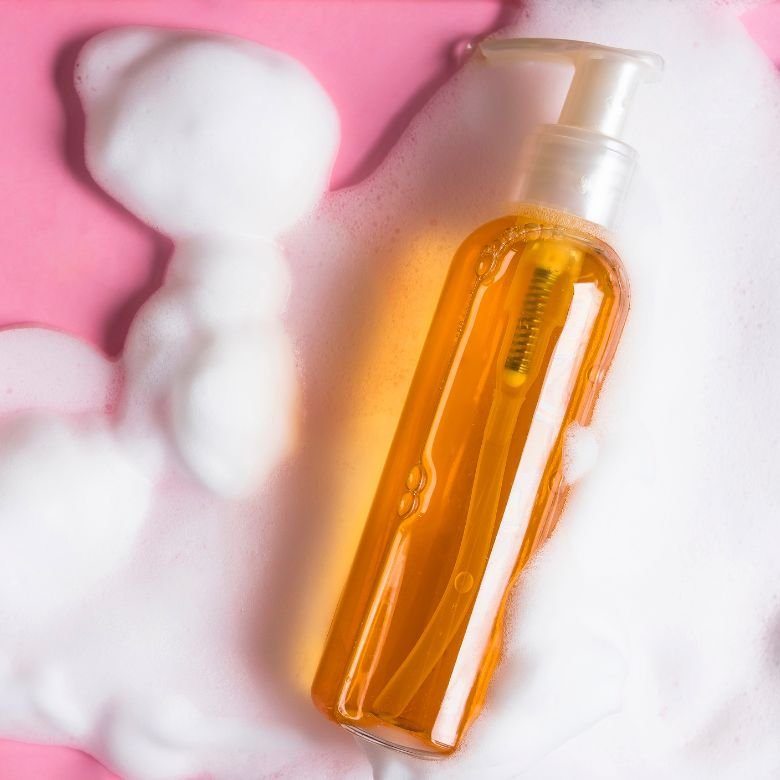Many people wonder: what is the PEG that is often found in cosmetics? In the first instance, we should say that PEG is an important chemical component in most daily-use cosmetic products that is responsible for their unique properties.

Polyethylene glycol (PEG) and its derivatives form a large family of oil-derivative chemical substances. Formulators in the cosmetics industry and in many other industrial sectors use them eagerly because of their relatively low price and desirable characteristics. Organisations such as the CIR (Cosmetics Ingredient Review) or the FDA (Food and Drug Administration) have considered PEGs to be safe, which is why they can be an element of various formulations.
General characteristics
The acronym PEG stands for polyethylene glycol. It belongs to the group of polyoxyethylene glycols. From chemical point of view, PEG is a polymer, that is to say, a chemical substance built of may repeating units. For polyethylene glycol, the fragment that repeats is the molecule of ethylene oxide. The number of units that undergo polymerisation varies (which is indicated by the number standing by the acronym PEG, e.g., PEG-40 or PEG-400), which makes for a large quantity of different PEG derivatives, so the whole group of substances are referred to as PEGs.
Whether we speak of polyethylene glycol or its derivatives, they all show very good solubility in water, toluene, acetone, ethanol and methylene chloride. The properties of different compounds differ based on the number of mers in the polymer chain. Compounds with a lower molecular mass are normally liquids, while the higher the molecule (i.e., the longer is the polymer chain), the higher the viscosity, and thus the substance takes the form of a paste, wax or solid. Unlike the volatile organic compounds, liquid PEGs (those with a low molecular mass) are non-volatile. In addition, PEG is fire retardant and biodegradable. The compounds classified as PEGs usually show good stability in acids, bases, oxidants and reducers.
The role and effect of PEGs in cosmetics
Given its unique characteristics, polyethylene glycol, in fact the entire PEG family, plays a number of important roles in cosmetic products. Below we present the principal effects of PEGs in the cosmetics industry:
- emulsifier
The emulsifying properties are crucial to formulate a durable emulsion in order to create a heterogeneous system composed of two non-mixing liquids. One of them forms the so-called continuous phase, while the other disperses inside it and forms something that we call the dispersed phase. The use of PEGs to formulate (O/W or W/O) emulsions extends the life of the substance and, consequently, the product based on that type of emulsion.
- moisture stabiliser
Moisture in a cosmetic formulation is maintained at the appropriate level by compounds such as PEGs. The cosmetics that contain moisture stabilisers not only ensure adequate consistency of the product but are most of all excellent as preparations designed for dry skin. PEGs as compounds with hydrophilic properties bind water molecules on the surface to create an occlusion layer. It keeps moisture at an appropriate level that allows the skin to remain healthy and conditioned. Just as importantly, polyethylene glycol does not increase the permeability of the epidermal barrier (protection against the absorption of harmful environmental substances and against ultraviolet radiant exposure).
- washing substance
As cosmetic ingredients, PEG and its derivatives play an efficient role in the process of removing contaminants. This characteristic is determined by the structure of their molecule: PEGs belong to surfactants with hydrophobic-hydrophilic properties. As washing substances, they are responsible for wetting the surface, peptising and hydrolysing fat (contaminants are usually fatty) and emulsifying and dispersing contaminants, which are then removed from the surface along with their carrier.
- rheology controller
What does it mean that a substance is a rheology controller? Polyethylene glycol and its derivatives are capable of changing the viscosity of solutions, i.e., modifying their rheology. The viscosity of a cosmetic product is one of the principal parameters that must be measured and correlated. From the theoretical point of view, viscosity measurements allow us to obtain important information on the stability of emulsions. The information is important for product determination and quality control.
As one of the ingredients, PEG is contained in hair shampoos, body lotions, shower gels, lipsticks, shaving foams, make-up removers, moisturising creams, hand and foot care creams, coloured cosmetics and many other daily-use products. If we analyse the composition of these products, we will see that many of them also contain two or more of its other derivatives in addition to the polyethylene glycol.

Most common PEGs used in cosmetics
When choosing cosmetics and care products, we should learn their composition and be aware of what we’re buying. It is important to know what PEG is and what purpose it serves. Below we present three example compounds from the broad family of PEGs. Despite their similar chemical structure, they often have different roles as ingredients, and thus they materially affect the quality of the products they compose.
Apart from many PEGs, in cosmetics we can often find substances such as PEG-10 Hydrogenated Castor Oil, PEG-20 Oleate or PEG-100 Stearate. PEG-10 Hydrogenated Castor Oil is a popular emulsifier in O/W emulsions. Hydrogenated castor oil, as its name suggests, is a derivative of castor oil. It is contained in products such as creams, milks or balsams. PEG-20 Oleate, apart from being an emulsifier, acts also as a rheology controller in washing products (it increases their viscosity). It is also a solubiliser, an ingredient that facilitates the introduction of substances that are insoluble or sparingly soluble in the aqueous solutions they are added to, such as plant extracts or fatty substances. PEG-100 Stearate is an example of a surface active agent which, just like the substances mentioned above, is an emulsifier in O/W emulsions but also a foaming agent that facilitates the production of high and stable foams. It is often used in hair shampoos or shower gels.
Safe or not?
The harmful effect of polyethylene glycol and its derivatives is a popular topic. The main issue about the PEGs is that they are produced with the use of ethylene oxide in the process called ‘ethoxylation’. This may cause contamination of the product with that compound as well as with 1,4-dioxane, which is cancerogenic. However, it does not occur in practice, and the toxicological profile of the substances classified as PEGs is very well known. PEGs are non-toxic and show no toxic or mutagenic effects. Their application in cosmetic products is safe for consumers. PEGs have also been tested for their use in dermatology: they neither irritate nor cause allergic reactions on the skin.
- https://www.kosmopedia.org/fakty-i-mity/skladniki-kosmetykow/czy-peg-i-sa-szkodliwe-dla-zdrowia/
- https://www.ncbi.nlm.nih.gov/pmc/articles/PMC4505343/
- https://cosmileeurope.eu/inci/detail/10515/peg-18/
- https://www.sciencedirect.com/science/article/abs/pii/S0300483X05002696
- Fruijtier-Pölloth C. Safety assessment on polyethylene glycols (PEGs) and their derivatives as used in cosmetic products. Toxicology. (2005);214:1–38. doi: 10.1016/j.tox.2005.06.001